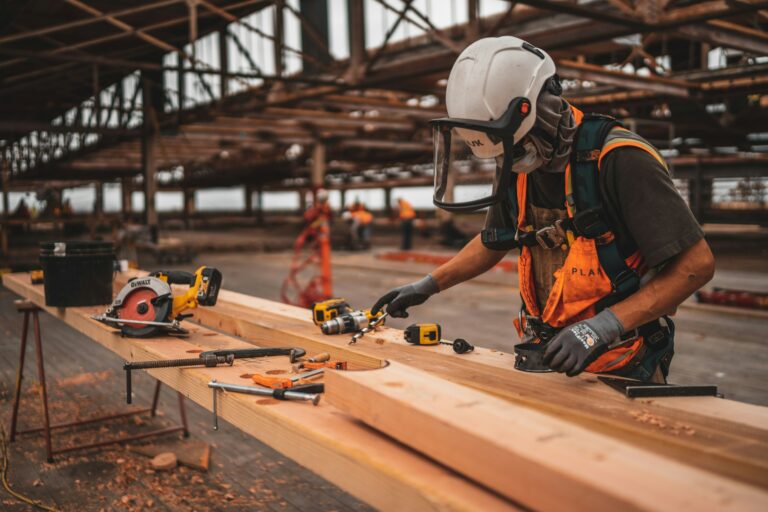
Understanding Your Rights After a Construction Accident in Miami
Construction sites are among the most dangerous work environments, comprising 60% of all OHSA inspections. The risk of slips, trips, and falls is high, and many people suffer extensive injuries every year in Miami and across Florida.
Table of Contents
For this reason, people need lawyers who can help them make robust compensation claims. Workers want legal professionals who can assist them in getting the money they deserve.
Unfortunately, most construction employees don’t understand their rights after an accident. Many don’t know how much the law and legal precedence protect them.
The purpose of this post is to discuss the potential compensation available to you if you’ve been injured on a construction site. We discuss OHSA regulations, Florida’s workers’ compensation laws, and how to pursue a personal injury claim with the help of a specialized attorney. By the end, you should know more about whether you have a case and need to take the next step.
Your Options After An Accident: Workers’ Compensation Or A Personal Injury Lawsuit
You can get compensation in several ways after an accident at work.
Option 1: Workers’ Compensation
Getting compensation through Florida’s workers’ compensation laws is the most straightforward approach. Payouts cover medical expenses, lost wages, and rehabilitation costs (or funeral and burial expenses if the worker dies).
Here, construction businesses purchase workers’ compensation insurance from their insurer. These policies cover injuries, illnesses, and deaths in the working environment.
Florida law states that primary and sub-contractors must both hold workers’ compensation policies and that the former must check the latter meets these legal requirements. The statute forbids anyone from operating as an independent contractor. Affected persons must either be owners or employees. It also bans employers from forcing you to pay the premium: they must disburse it from their revenues.
Workers’ compensation in Florida operates on a no-fault basis. That means the law entitles you to receive a payout if injured on the work site.
This aspect makes the claims process straightforward. However, it doesn’t let you prove your employer acted negligently.
Option 2: Personal Injury Lawsuit
The other option is to file a personal injury lawsuit. These can increase your compensation but may take longer to complete.
To win a personal injury case against a construction firm, you must demonstrate their negligence led to your injury. This process can be challenging without professional help.
Even so, there are numerous ways construction companies can act negligently to cause worker injuries. These include:
- Failing to provide adequate safety training. Workers can sometimes win personal injury compensation by proving a firm failed to provide sufficient safety training before asking them to complete a task. For example, they might not offer training on how to operate a piece of equipment safely.
- Failing to provide protective equipment. Construction companies are negligent if they don’t give workers sufficient personal protective equipment when required, such as hard hats and respirators.
- Failing to protect against falls. Not training workers in hazard recognition and providing proper fall protection could also be negligent.
- Ignoring safety hazards. Employers who know about potential dangers in the working environment but don’t manage them could be negligent if injuries occur because of them. For example, construction site managers might be liable if they don’t fix equipment known to be faulty.
- Assigning workers tasks they don’t have the qualifications to complete. Asking workers to perform tasks without proper training is negligent because it increases the risk of injury. For example, getting a new employee without experience in handling hazardous materials to move them could fall into this category.
- Pressuring workers to work in an unsafe manner. Getting workers to work for longer hours could create a higher risk of mistakes that the courts might deem negligent.
- Neglecting to supervise workers. Leaving workers to their own devices without proper supervision could be negligent if it leads to unsafe practices that put people at risk.
OSHA regulations
You might also be able to prove an employer’s negligence if they violated OSHA regulations. Employers in Florida don’t always abide by the code, providing opportunities to make your case.
OSHA regulations are rules set by the Occupational Safety and Health Administration (OSHA) to keep workers safe on-site and prevent accidents. These have various requirements for building sites, some of which we discussed above.
Here’s a list of some of the top regulations construction firms must obey to remain compliant:
Fall Protection
The 29 Code of Federal Regulations (CFR) 1926.501 details the steps employers must make to protect you against falls. The code states that firms must provide safe walking and working surfaces to prevent trips and supply guardrails, personal fall arrest systems, or safety nets if you operate above six feet.
Eye And Face Protection
Firms must also supply you with suitable eye and face protection when handling dangerous chemicals, glass, or molten metal. If the equipment is absent or unsuitable, they are breaking OSHA rules.
Preventative Maintenance
The OSHA also requires firms to carry out preventative maintenance on machinery, according to 29 CFR 1910 through 1910.1450. Firms must ensure that equipment is safe for construction workers.
To fulfill this requirement, a qualified maintenance engineer must inspect and verify the performance of machinery periodically. Companies must put broken or faulty equipment out of commission until they can make repairs. Workers should not use it in the interim.
Worker Training Requirements
The OSHA also requires that construction firms train their workers adequately for the dangers present on the building site. Employees should know how to recognize and avoid known hazards and unsafe working conditions.
Employers that fail to provide this education may be negligent. For example, companies that fail to provide training on dangerous chemicals, plants, and animals on-site could be liable if they injure workers.
Scaffolding Safety
Scaffolding safety is another OSHA requirement and part of 29 CFR 1926.451. It says that each piece of scaffolding should support at least four times the maximum intended load. It also says that only qualified persons should design and implement scaffolds and numerous other regulations. If construction companies break any of them, they could be liable.
Ladder Rules
Finally, the OSHA outlines various ladder rules for construction sites. These aim to reduce the risk of dangerous falls.
For example, ladders must be capable of supporting the load of the person using them, and rungs should receive treatment to minimize slip hazards. Any construction firm neglecting to follow all these rules could be acting negligently.
How To Pursue A Construction Site Personal Injury Claim With The Help Of A Specialized Attorney
If you believe your employer acted negligently, pursuing a personal injury claim could be your best option. Working alongside a professional lets you avoid making legal mistakes and ensures your case is as strong as possible.
The first step is to schedule a consultation with a personal injury lawyer. Your attorney can listen to your story and explain your options based on the evidence provided.
The next stage is to gather evidence to support your claim. Ideally, you’d do this immediately after the injury.
For example, you and your attorney might collect police statements, medical reports, and accident photos. You could also gather CCTV footage, if available, and documentation produced by your employer after the accident.
In some cases, it might also be worth undergoing another thorough medical examination. A second report can help identify all the damage done to your body by the accident.
Once you have the evidence, your attorney will begin building a case. The goal is to determine the liable party and whether negligence occurred.
Some lawyers will stop the investigation at this point if the evidence is against you. However, if it offers support, you could establish fault (meaning that your employer was negligent and their actions directly caused your injury).
If you have a strong case, your attorney will begin negotiations with the liable party’s insurance company. Lawyers understand the rules and can submit information that increases the likelihood of a payout.
Usually, insurers will pay a negotiated settlement based on the facts of the case. Your attorney will continue going back and forth with them until they get a suitable offer.
Sometimes, though, insurers will refuse to pay a fair amount. If that happens, your lawyer may recommend you file a lawsuit and take the case to court. Here, a judge and jury decide whether your case is fair and how much compensation you deserve.
Attorneys only recommend this action if they believe the initial settlement is unreasonable. Ultimately, whether you take a case to court is your personal decision.
Act promptly if you have been involved in a construction accident in Miami. Getting the professional help you need now makes it more likely you will meet all the deadlines, preserve evidence, and get the result you want in court.





